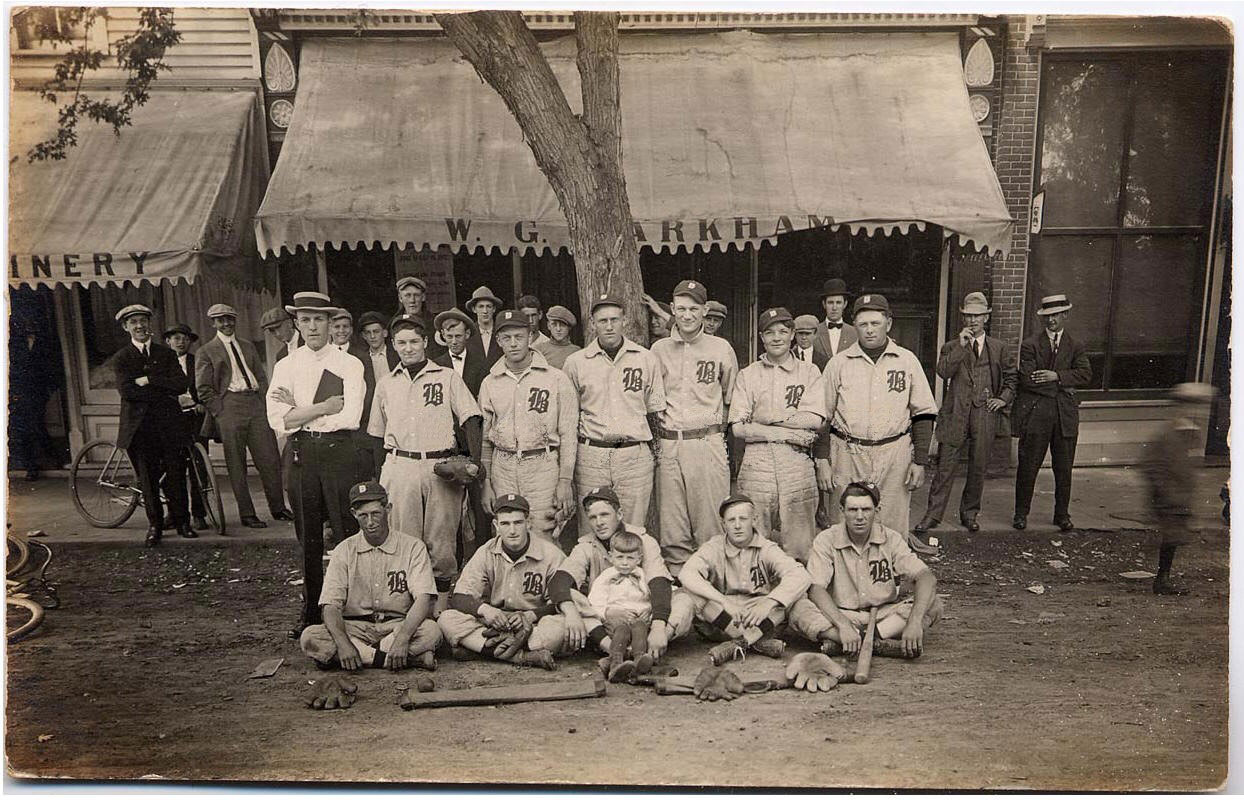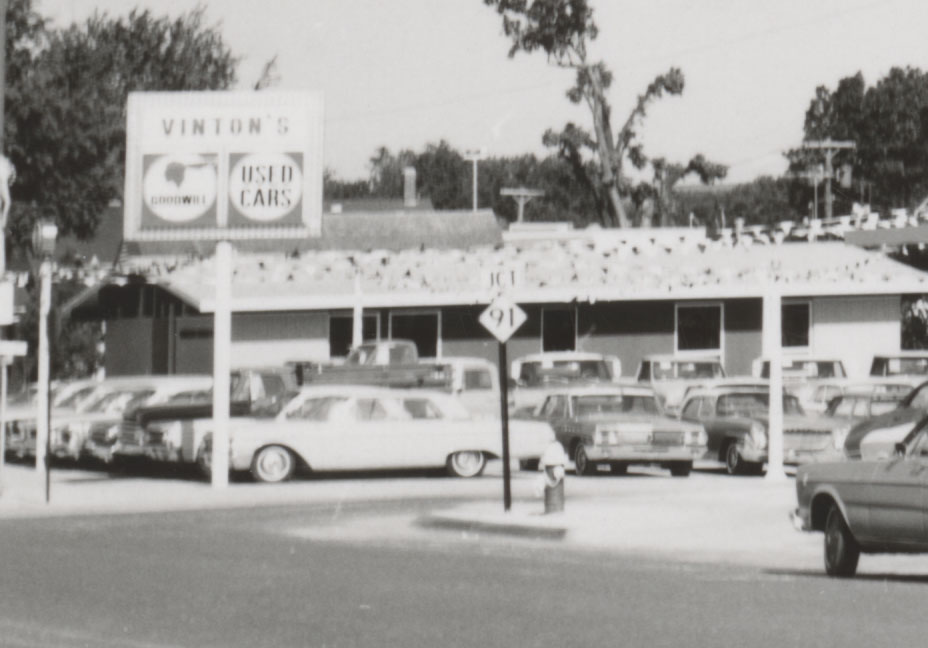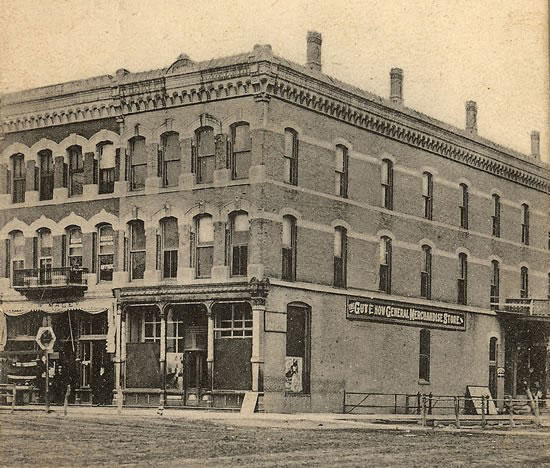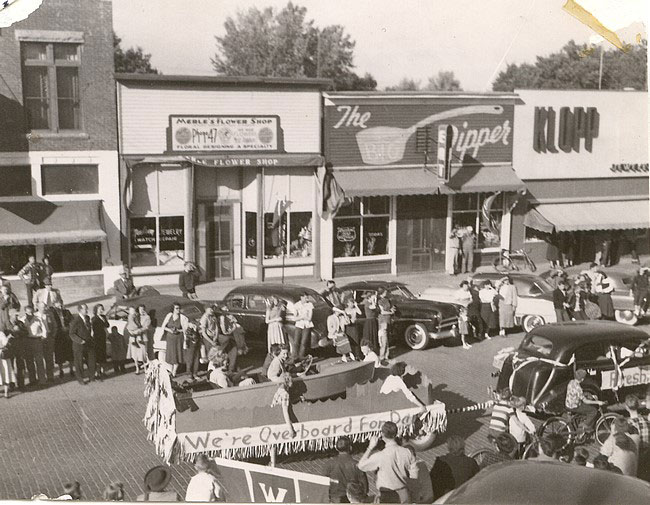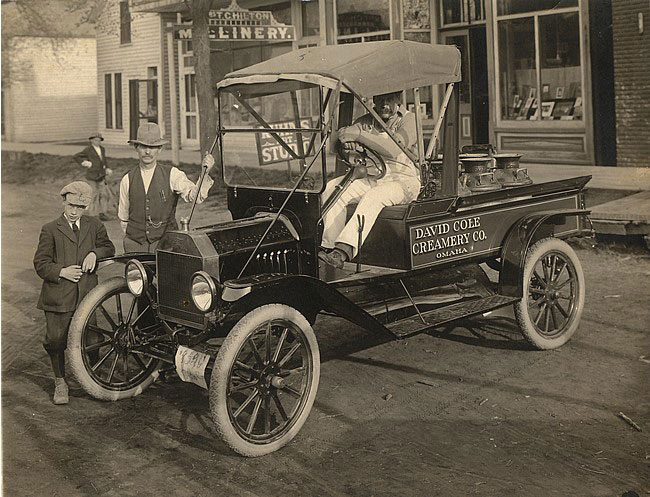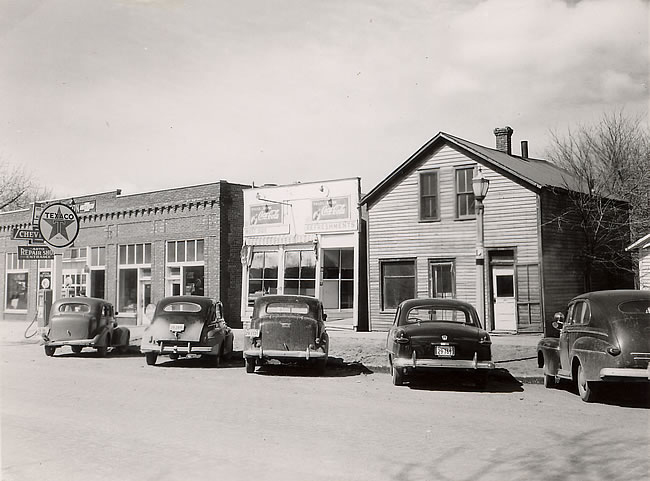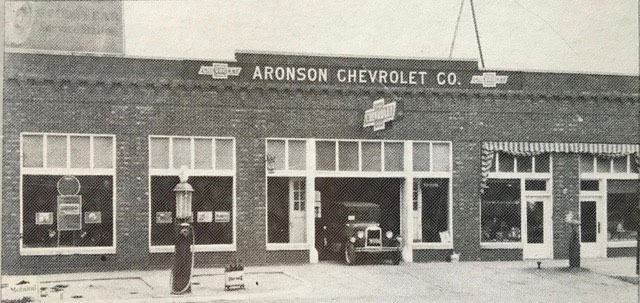Home > Archive > Early Railroads
Early Railroads
from Andreas’ History of the State of Nebraska
Burlington & Missouri River Railroad
During 1870, twenty-six and one-half miles of road were completed to De Soto and a lease entered into with John I. Blair of a branch of the Missouri & Pacific road, known as the “De Soto Plug,” by which communication between Omaha and Blair became direct and regular. Business grew in proportions, the country contiguous to the line contained a population of 40,000, and was being rapidly settled by an energetic, industrious class of farmers and business men. The road received $200,000 in 10 per cent twenty-year bonds from Douglas County; $150,000 in 8 per cent twenty-year bonds from Washington County for the building of the road from the south to the north line of the latter county; in addition, 2,000 acres per mile from the State and liberal donations from other northern counties. It was proving a valuable auxiliary to Omaha and rapidly bringing Northern Nebraska into full communion with the East. The financial condition of affairs was at this time most satisfactory. The cost of the road had been thus far $450,000, for which cash was paid and no mortgage bonds issued. October 7, 1871, the road was completed to Herman, on the line of Washington and Burt Counties, and located seven miles north to Tekama [sic], with the prospect of extending a branch by way of Logan Creek and Elkhorn Valley to the mouth of the Niobrara.
The Chicago & Northwestern Lines
History of Nebraska: From the earliest Explorations of the Trans-Mississippi Region, by J. Sterling Morton and Albert Watkins.
The Sioux City & Pacific railroad company was organized August 1, 1864, in Iowa. The Northern Nebraska Air Line was organized June 7, 1867. The Sioux City & Pacific acquired the Northern Nebraska Air Line by consolidation September 15, 1868. It was built from California Junction, in Iowa, to the Missouri river and from the Missouri river near Blair, Nebraska, to Fremont, completed in February, 1869. Its Iowa organization received a small grant of lands through act of Congress, of July, 1864. It maintained a steamboat ferry at Blair in summer, and generally, in extreme cold weather, a track on the ice across the Missouri river in winter, to the time of the completion of the present Missouri Valley & Blair railway and bridge, August 9, 1882.
The Fremont, Elkhorn & Missouri Valley railway company was organized January 20, 1869. This company never had any land grant. It commenced construction at Fremont, after the completion of the Sioux City & Pacific to that point in 1869. It was extended in that year to Maple Creek, Nebraska, ten miles north of Fremont. In 1870 it wag completed to West Point and in 1871 to Wisner, and there rested till 1879, when it was extended fifty-eight miles to Oakdale, and in 1880 to Neligh; also from Norfolk junction to Plainview. In 1881 the branch was ex-tended from Plainview to Creighton, ten miles, and the main line in the same year was extended from Neligh to Long Pine, about ninety-eight miles.
History of Nebraska: From the earliest Explorations of the Trans-Mississippi Region, by J. Sterling Morton and Albert Watkins.
Spanning the Missouri River.
“Westward expansion accelerated demands for transportation, resulting in rapid railroad expansion, speculation in real estate, and a general scramble for quick fortunes. Speculation was particularly common in the outfitting centers that engaged in the lucrative business of supplying immigrants,” particularly Council Bluffs and Sioux City. Once it was enough to bring goods to the Missouri River and then transfer them to steamboats. Later, laborers transferred cargoes from the rail cars to ferries at the Missouri River crossing, then back to rail cars on the other side. By the 1870s a bridge spanning the Missouri became vital to the health of the railroads and the outfitters.
Building a bridge across the Missouri was no easy task. According to Grenville Dodge, Chief Engineer for the Union Pacific Railroad, the Missouri River was the most formidable obstacle to travel between the Atlantic and the Pacific due to its unpredictable nature and violent channel shifts. Early (pre-1870) bridges were wooden. Later bridges employed the use of iron, which was less vulnerable to floods, but was very expensive. Because of the high cost of iron, many bridges were a combination of iron and wood. After the Bessemer process was developed, steel was more affordable, so it was used exclusively for strength.
Octave Chanute was the first to construct a railroad bridge across the Missouri River. Completed in 1869, Chanute’s bridge spanned the Missouri at Kansas City. The following year the Army built a bridge further north to provide access to Fort Leavenworth, Kansas. Shortly thereafter the publicly
funded Atchinson and St. Joseph Bridge was constructed to link those two cities. Undoubtedly, the Union Pacific Railroad Bridge joining Omaha and Council Bluffs was the most spectacular bridge of its day. Built between 1869 and 1872 at a cost of $2.9 million, the Dodge design was one-half mile
long with wrought iron trusses planted in bedrock.
Because Dodge’s Union Pacific Bridge was the first one north of Fort Leavenworth, Kansas, other railroads clamored to use it. The Union Pacific accommodated their requests in exchange for a toll. The arrangement was challenged in the courts, and in 1876 the U.S. Supreme Court ruled against the practice. However, Congress immediately passed a law legalizing the tolls, and the practice resumed. Angered by the tolls, many competing railroad lines decided to build their own bridges between Iowa and Nebraska.
It was not Dodge, but rather George Morrison who standardized Missouri River bridge construction, and was instrumental in the development of the steel bridge industry in the 1880s and ‘90s. In the 1880s, Morrison built bridges across Missouri River at Plattsmouth, Blair, Omaha/Council Bluffs, Rulo, Sioux City, and Nebraska City. Each succeeding bridge reflected a change in technology, resulting in bridges that were stronger, safer, and reasonably expensive. Morrison’s first bridge across the Missouri, built in 1879-1880, crossed the river at Plattsmouth, Nebraska. Constructed for Chicago, Burlington & Quincy Railroad of steel and iron, the Plattsmouth Bridge has six long-span whipped trusses. A change in the channel at Omaha/Council Bluffs enabled a shorter bridge at that location, and the Union Pacific hired Morrison to design a replacement for Dodge’s 15-year-old bridge in 1887. Constructed of steel and iron, Morrison’s Omaha Bridge included a cantilevered pedestrian/vehicular roadway along with the rail system. The following year Morrison built an all-steel multi-span Whipple bridge at Sioux City, and another all-steel bridge at Nebraska City. The Nebraska City Bridge accommodated trains, vehicles, and pedestrians, but not simultaneously.
Dodge and Morrison generally took advantage of the loess bluffs on either side of the Missouri River when planning the locations for their spans. The bluffs provided a measure of predictability to the river channel. When asked to design and build a bridge near Blair, Nebraska, Morrison was unable to
find a bluff-protected spot. After pursuing the possibilities within a 50-mile radius, Morrison constructed the Sioux City and Pacific bridge at Blair Crossing, approximately 20 miles north of Omaha. His notes recorded his frustration at the unpredictability and volatility afforded by the unprotected location.
Romance of Omaha
by Fred Carey
Compilation of reprinted articles that appeared in the Omaha Bee-News from December 3, 1928 to January 11, 1929
The problem of crossing the Missouri river, which in recent years has resolved itself into the problem of securing nontoll bridges up and down the great stream, has been of major moment to the people of Omaha, Nebraska and adjoining states for the last 100 years. The trappers, fur traders and explorers, and later the early settlers, found the root of their difficulty was in crossing the river at any time and in any form. All they asked was that they get across in safety. The “Big Muddy” was a natural barrier. While it formed a means of travel for canoe and flatboat north and south, it wound its sinuous length across the pathway of the pioneer and held up his hegira toward the gold-flecked horizons of the beckoning west. The plodding oxen dragging the prairie schooner toward the setting sun and the 20-mule team of the daring frontier freighter alike were halted when they reached its banks. And so it came that – when they got the chance -they hailed the unwieldy ferryboat with joy, glad of the opportunity to pay the ferryman’s fee. It was a decided advance from the more precarious method of crossing in canoe, flatboat, keelboat or other contrivance. Even swimming was resorted to.
Old-time Ferryboats
Before Omaha was founded a ferryboat crossed the Missouri river between what is now Council Bluffs (then Kanesville) and what is now Omaha (then an uninhabited plateau), The movement of the pioneers to the west had begun at that early date and some far-seeing residents of the east side of the river took advantage of the opportunity to become ferrymen. William D. Brown, the man who is given credit for having the first vision of the future possibilities of Omaha, operated the first ferry at this point. He had been running a ferry farther north on the Missouri. He had already expressed his belief that a great city would arise on the western bank of the river. He decided to be first in the field when the westward rush began. He operated for a time what he called the “Lone Tree Ferry,” so named because its western objective was a lone tree standing near the river bank. That the ferry did not always stop near the tree made no difference to Mr. Brown.
Steam Ferry Arrives
Other residents of Council Bluffs became interested in the possibilities of the ferry and Dr. Enos Lowe was commissioned to go south to buy a steam ferryboat. He found a boat on the Mississippi. Loaded down with a cargo, the ferryboat arrived opposite Omaha one day in June, 1853, was unloaded and immediately put into commission. It was the first steam ferry on this part of the Missouri river. Named the “General Marion,” the boat served its purpose until 1855, when it was left high and dry on the east bank during very high water and was not used again.
The ferry company bought or built other steamboats and continued to give good service until the opening of the Union Pacific bridge in 1872. For a time after that the ferry was used to transport passengers across the river. In the winter they crossed on the ice.
Build First Bridge
The first serious attempt to bridge the Missouri river at this point was made when work was begun on the Union Pacific bridge in the spring of 1869. It was not finished until March, 1872, and was opened that month. Five years later the two eastern spans were wrecked by a windstorm and Omaha for a month reverted to the old ferry system of crossing the river. The “Queen of Decatur,” a large flat bottomed ferryboat, was brought down from Decatur, Neb., to meet the emergency. It was not until November 1,1888, 40 years ago, that the first passenger and vehicle bridge spanned the Missouri river. On that date the present Douglas street bridge was opened to the public for street cars, vehicles and pedestrians. The third bridge, that of the Illinois Central, was not completed until the early 90s.
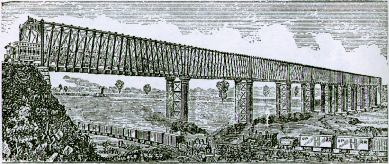
The First Union Pacific Railroad Bridge across the Missouri River at Omaha (1872)
Unbuilt Bridge
During 1892 the city of Omaha and the county of Douglas voted $750,000 to aid in construction of a bridge across the Missouri, but it was never built. The Burlington railroad built a bridge across the Missouri at Plattsmouth and later at Nebraska City. The Northwestern spanned the river at Blair. Instead of building more bridges, other railroads contracted for the use of the Union Pacific bridge at Omaha. One of the unusual methods of crossing the river was a pontoon bridge at Nebraska City. It was laid on pontoons that floated on the water and afforded passage for both vehicles and pedestrians. It seemed a rather shaky structure, but served well. Years afterward the Burlington railroad laid planks across the railroad bridge and opened a toll bridge. This is still in use. Each bridge that was opened in those days was the signal for great jollification and celebration. The people of those days were so delighted at their emergence from the ferry days that they gave little heed to the question of tolls or fares. It was enough to have a bridge of any kind.
Object of Tolls
But as times changed an automobiles succeeded horse vehicles, the desire to travel farther and faster seized the people. They began to ask why they should pay to cross the rivers. One by one the toll bridges across inland rivers in Nebraska and other states were made free, but the Missouri, running between states, remained spanned by toll bridges. South Dakota within the last 20 years has built five nontoll bridges across the Missouri river in that state. Missouri also has abolished its Missouri river toll bridges, except where they span the river between states as at St. Joe. The demand for nontoll bridges has recently become so insistent that all up and down the Missouri from Kansas City to Omaha plans are under foot for the acquisition of toll bridges by the people.
More Bridges Coming
At the present time plans are being made to bridge the Missouri at Rulo, Nebraska City, Union, Plattsmouth, Blair, Decatur, Sioux City and Niobrara. Railroad bridges exist at Rulo, Nebraska City, Plattsmouth, Blair and Sioux City. A fine railroad and vehicular bridge spans the river at Yankton. The plans of the builders of all these spans are to operate them as toll bridges until they are taken over by the state or by some city our county. Under the bridge franchises granted by congress the bridges may be purchased at actual cost by the state or a subdivision thereof and operated as toll spans until paid for. Then they must be free. Work was begun on the Blair bridge last fall and work is to begin on the Plattsmouth span in the spring. The other bridge projects are still in the planning stage.
Solving Problems
If all the projects go through there will be eventually 10 toll bridges between Nebraska and other states at Niobrara, Yankton, Sioux City, Decatur, Blair, Omaha, Plattsmouth, Union, Nebraska City and Rulo. In time it is proposed that they all be freed of tolls. The problem of how to cross the Missouri without paying toll is now as acute as the pioneer problem of how to cross it other than by swimming. The pioneer solved his difficulty. The modern Nebraskan will, it is safe to say, solve his problem.
Early railroad lines
Union Pacific
first to build a bridge across the Missouri River in the area — at Omaha
Burlington Railroad built a bridge across the Missouri River at Plattsmouth & Nebraska City
Burlington & Missouri River Railroad
Established in Nebraska before 1870, it was actually a subsidiary of the Chicago, Burlington & Quincy (CB&Q)
Northwestern Railroad (merger of _____ & _____)
Omaha Road – Beginning in 1869, the Omaha & Northwestern Railroad started laying tracks in Omaha (at Izard Street) and built 40 miles north to Herman, Nebraska. This line eventually became part of the Chicago, St. Paul, Minneapolis & Omaha.
The Sioux City & Pacific railroad
organized in 1864, in Iowa and then acquired the Northern Nebraska Air Line by consolidation. Built the Blair Bridge in 1883.
The Northern Nebraska Air Line
organized June 7, 1867
Chicago, Milwaukee & St. Paul Known as the “Milwaukee Road”
Chicago, St. Paul, Minneapolis & Omaha (CSPM&O)
Served the following: Dakota (after 1872), Douglas (before 1890)
Fremont, Elkhorn & Missouri Valley Railroad (FE&MVRR)
Started building their Nebraska route, which became known as the “Cowboy Line” in 1869.
Adjust the text size



Featured Pictures
Archive Links
BHPA Links
Blair Historic Preservation Alliance | P.O. Box 94 | Blair, Nebraska 68008 | contact@blairhistory.com

